We booked a four-night trip on the Nordstjernen, a Hurtigruten ship first launched in 1956, and we cruised north along the fjord-punctuated western shores of Svalbard. Tucking into our first evening meal, we heard an announcement: polar bears had been sighted. The dining room emptied in seconds and 50 passengers scanned the coastline for a glimpse of a mother and two cubs raiding birds’ nests on a little rocky island a couple of hundred metres from the ship. With no pack ice, bears need alternatives to seal prey. Happily, the captain kept his distance and we watched the little family for half an hour or so without disturbing them.
Flotillas of black-and-white guillemots and little auks, inhabited the seas around us, nesting in huge numbers on precipitous cliffs at the fjord entrance. And it was with great excitement that I spotted the dark round back and bottle-opener-shaped dorsal fin of a minke whale, though it only surfaced to breathe twice and then was gone. Graceful fulmar, albatross of the north, followed the boat so closely we could sometimes feel the air from their wings on our faces; even so they aren’t easy to photograph. Fulmars are known as foul gulls for their ability to projectile-vomit fishy stomach contents at unwelcome visitors. The puke is so oily and adherent it can even ground avian predators. Puffin bills brought surprising flashes of colour to the black-and-white scenery. But who cares about colour if there is a walrus out fishing close to the ship? It was a huge bulky brown shape floating in a still, azure sea, its tusks and whiskers visible as it took in air. Walrus also sometimes haul out on beaches close to the airport in Longyearbyen and that must have been what those bird nerds had been photographing the day we arrived.
Many of the birds use floating ice as perches, with collections of lovely yellow-billed, soft grey kittiwakes and black-and-white little auks looking like diminutive penguins. I felt sad that the great auk (
Pinguinus impennis,Linnaeus), the true penguin of the north, the species of black-and-white flightless bird that gave penguins their name, was long gone. Sailors from the northern hemisphere (many of whom would probably have been responsible for the annihilation of the great auk) saw black-and-white flightless birds in the Antarctic, and called them penguins too. How magnificent would it have been to have been able to witness the huge numbers of this other ‘pinguin’ on the crags and floes of the Arctic! Almost as tall as a king penguin, they stood 75-85cm high but weighed 5-8 kilograms or about half as much. The last breeding pair was killed in 1844.
We went ashore each day although sometimes we needed to wait for the sea fret to lift so that the visibility was enough for our rifle-toting minders to spot polar bears. On the beaches and screes, we saw some of the plants that survive in this harsh environment. Most of the tiny flowers were white but there were surprising diminutive yellow arctic poppies and cushions of purple saxifrage, which in this black-and-white landscape seemed spectacular. The other source of colour in the Arctic is the changing blues and greens of the sea, and the astonishing deep blue of the glacier ice. There were also splashes of bright orange from lichen growing on boulders; this is beloved of reindeer whose longevity in the wild is limited surprisingly by dental health or now by polar bears. Climate change is making some bears shift feeding strategies from hunting seals on pack-ice to chasing reindeer. The bears have little chance of a kill on land though so chase the reindeer into the sea where the bears have the advantage. If reindeer avoid that bloody end, they will wear out their teeth from scratching lichen off rocks and starve in old age, that’s at about 12.
The furthest our little ship ventured was to Moffen island lying north of the 80° parallel and hardly more than a sandbank clouded in sea mists. It is an important spot for walrus to rest and as we slowly approached, we made out so many blubberous brown bodies stretched out on the sand, totally relaxed and safe. Passengers were tussling for the best viewing spot in the bows of the ship and in my excitement, I made to step into a triangular niche between the hull and some kind of winch, except I tripped and fell forwards in a trajectory where I might have dented to hull of a lesser boat but cast iron won, and in my desire to protect my camera I found myself wedged in this triangular slot momentarily baffled and wondering how to get out. A miraculous hand appeared from the sky above me and hauled me out and, bleeding liberally from a gash on my head, I was marched away to the sick bay. The ‘nurse’ who attended me did all the right things, applied direct pressure and then a huge comedy bandage. I let slip I was a doctor and needed no further treatment and returned to my cabin realising I’d missed the best chances to snap the perfect walrus portrait.
Around six the next morning someone knocked at our cabin door and I woke thinking, how nice, they’re checking that I haven’t lapsed into a coma from a subdural haematoma. That wasn’t the case. Another passenger was in extremis and the crew were wondering whether to evacuate her from the ship by helicopter. Would I see her? Fortunately, my comedy head bandage had fallen off in the night so I slipped a fleece over my pyjamas and went to see what the problem was. The passenger had been vomiting a great deal, her throat was sore and felt as if it was closing up so she was more than a little worried. Happily, there was no swelling so I reassured her and everyone else that a helicopter wouldn’t be needed, although I was impressed that this was an option.
Svalbard is a haven for wildlife although there is an interesting relationship between humans and polar bears. Warning notices everywhere – even on the road between Longyearbyen and the airport – highlight the risk of polar bear attack but not everyone takes note. A French couple decided to camp out of town; their cooking must have sent sumptuous scents to the nostrils of a hungry bear, who accepted the invitation for dinner, and ate them.
The friendly chap who sold us stamps in the world’s northernmost post office told me that he has a cabin close to the airport where he retreats with his family from town life, and a bear came calling. My informant phoned the police, who came with a chopper and scared the bear away. Locals venturing out of town carry at least a flare gun and most also have a rifle or travel with someone who is carrying a rifle. The idea is to scare the bear with the flare gun and only use the rifle as a last resort. Any incident when a bear is shot though is investigated and any killing that is deemed unnecessary is severely punished and the perpetrator is likely to have to leave Svalbard forever.
 |
| Sadly minke whales are still hunted; their meat is served in local restaurants |
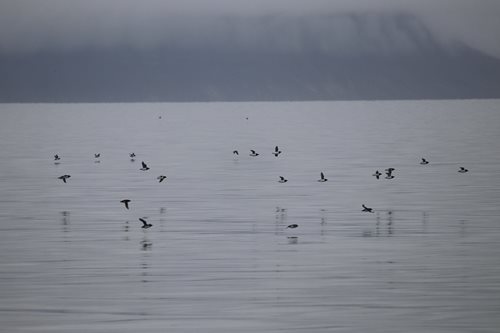 |
| Little auks |
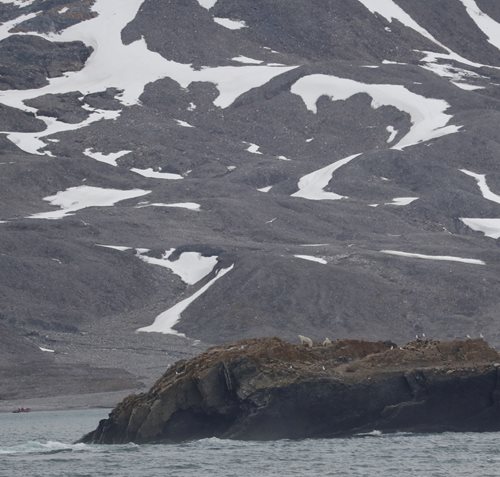 |
| A distant polar bear family filching eggs and nestlings |
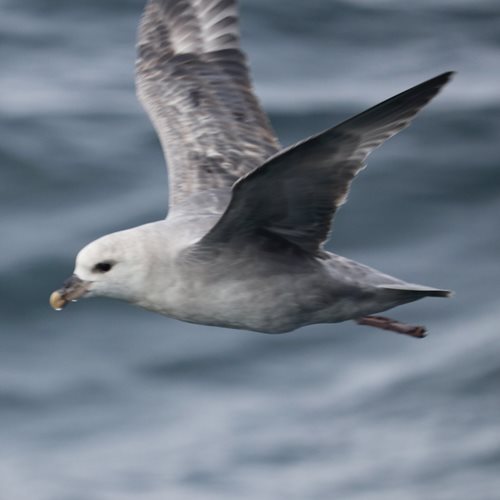 |
| Fulmar - the albatros of the north - able to stay at sea for months because of their ability to excrete salt via their tube-noses; note the drop in its beak |
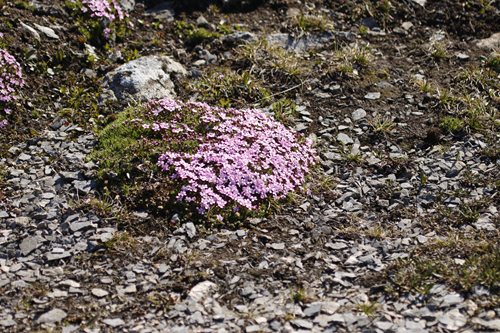 |
| A rare splash of colour: purple saxifrage |
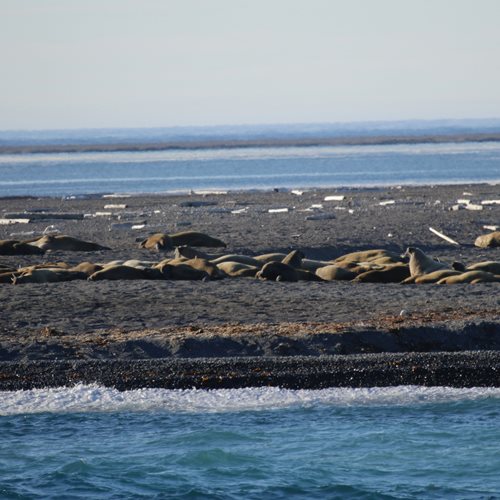 |
| Walrus on Moffen Island |
NOTE: I've posted other relevant photos on Instagram @longdropdoc
The first part of this blog is at
Spitsbergen and the Svalbard Archipelago